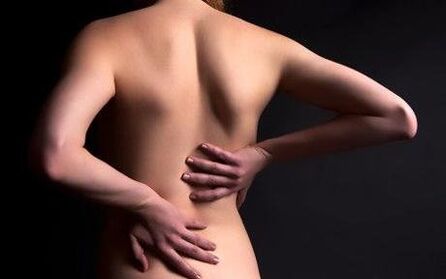
Osteochondrosis is the main disease of the generation. The main catalyst that triggers the development of the disease is a sedentary lifestyle. Since the late 90s of the last century, more and more people have been confronted with osteochondrosis due to changes in work and lifestyle. Osteochondrosis is a shift in the intervertebral discs followed by a degenerative, negative change. Osteochondrosis manifests itself in various, unexpected places. Osteochondrosis of the chest region is considered an unpleasant, complex disease. Pain, heaviness, and inability to move usually accompany the disease. Don't Despair - There Is An Effective Treatment For Breast Osteochondrosis!
Breast osteochondrosis is different from other types. Degenerative disc disease of the thorax - displacement of the thoracic vertebral discs. Chest pain with osteochondrosis does not bother many, the burden on the chest region is not great.
The thoracic spine is inactive, injured more heavily, less often. The limbs of the thoracic region are less elongated, more thorny, connected to the ribs by joints that severely restrict the movement of the spine. This strengthens the department - it protects the internal organs better than the pelvic region.
Chest pain with osteochondrosis is often passed off by people as a symptom of other diseases. Some say that sitting for long periods of time pinched their nerves. Others argue that these are tight muscles that cannot relax. If you are in pain, you should consult a doctor.
Regardless of the type of pain or sensation, consult your doctor. There is talk of a deterioration in the state of health, the disease becomes chronic.
Symptoms of chest osteochondrosis
It can be difficult to distinguish symptoms of thoracic osteochondrosis from symptoms of similar conditions. The doctor will find out and prescribe the treatment in a short time. Symptoms as with radiculopathy - compression of the nerves of the spinal cord. Feels like a herniated disc after intense physical exertion.

Pain in osteochondrosis of the chest region is manifested in the upper part of the department - the pain goes over the area and penetrates the shoulder blades, shoulders and abdominal cavity. If the pain persists, a loss of sensitivity of the vertebrae is often observed. The result - the lower vertebrae lose sensitivity and become inactive. The mobility of the thighbones deteriorates.
People with chest osteochondrosis experience pain differently. There are two types of pain:
- Dorsalgia (persistent, aching pain with limited mobility of the intercostal discs in the sternum)
- Dorsago (sudden, acute pain that takes the form of a fit)
If you cannot see a doctor, it is worth doing exercises that will relieve pain and minimize sprains of the vertebrae. You should not wait for a full recovery during gymnastics - it temporarily relieves pain and relaxes the intervertebral discs. It is worth making a doctor's appointment.
Exercises for pain relief
Before starting the exercises, it is worth preparing the body. Take a shower, do a light warm up, let your muscles warm up. When you feel that the pain symptoms have subsided, start exercising.
It is recommended to do therapeutic exercises if the patient does not have acute pain symptoms! Otherwise, if it is painful to move, it is recommended to give up self-treatment. Gymnastics has a preventive character and helps those who are not very suffering from symptoms of osteochondrosis of the chest. For breast osteochondrosis, do not take pills without a doctor.
Exercises:
- The exercise is performed with a chair. Sit in a chair with your upper back resting on your back. Bend backwards so that a large area of motion falls on your chest. Finish the exercise by slowly leaning back to the starting position without looking up from the back of the chair;
- Exercise improves the functioning of the lungs and chest area. Take a towel and wrap the lower third of your chest. As you breathe out, press down on the towel to increase the amount of air that comes out of your mouth. Exercise is considered a prophylaxis against respiratory diseases, warms the chest muscles, relieves pain;
- Exercise - prevention of osteochondrosis. Lie on your stomach, spread your arms out sideways. Lift the upper body, with the sternum we try to grip the arms into the "lock" from behind. Try to flatten your shoulder blades. Slowly and carefully return to the starting position.
Exercise is a way of relieving muscle and joint tension and helping to position the intervertebral discs. Unless they're very biased. Otherwise, you should see a doctor. Injections for osteochondrosis of the chest region are useful to the patient when prescribed by a doctor.
Breast osteochondrosis is sometimes cured without resorting to traditional medicine (when the disease is just beginning to develop). With severe forms of the disease, you can not do without a doctor. Especially when thoracic osteochondrosis is accompanied by mild diseases - neuralgia, cough. Cough with osteochondrosis of the chest region is a consequence of osteochondrosis; irritated, displaced, the intervertebral discs injure the joints, which irritates the lungs.
Conclusion
Osteochondrosis is not a devilish forgiveness. With acute pain, it is recommended to consult a doctor who will prescribe treatment and prevent the development of the disease. If you feel uncomfortable, don't limit yourself to prevention - tell your doctor!





































